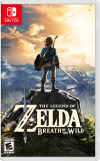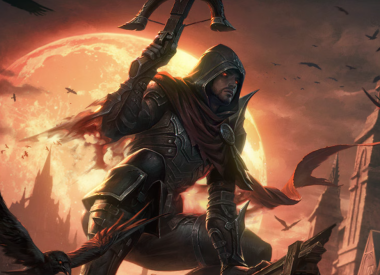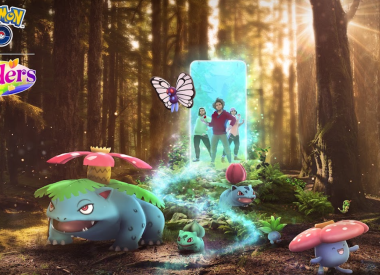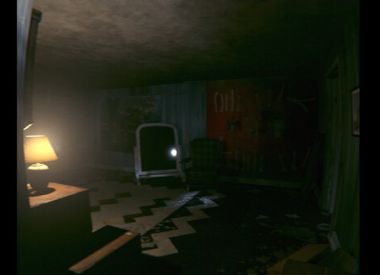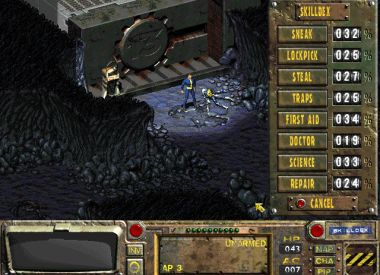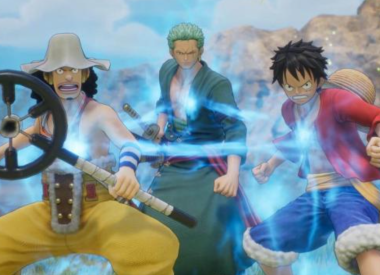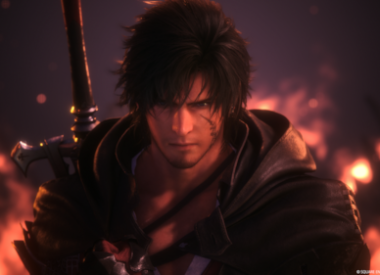Early in The Legend of Zelda: Breath of the Wild, Link comes across the ruins of the Temple of Time, watched over by an old man who’s much more than he seems. Immense and still, the dominant sensation is reverence and wistfulness for the greatness of the past, before 100 years of Calamity Ganon’s dark influence. The Temple of Time is a sacred, melancholy place.
It’s nothing like the Temple of Time in The Legend of Zelda: Ocarina of Time. In the series’ first Nintendo 64 entry we see the Temple of Time twice, first at the height of its shiny glory and seven years later as a place of darkness, where howling winds are joined by a chorus of the damned. The Castle Town’s citizens have become Redead — moaning, shriveled corpses wearing wooden masks and freezing Link with their petrifying stare.
For all of the ways Breath of the Wild perfects The Legend of Zelda series’ mechanics and world-building, presenting a living, breathing Hyrule to top everything that’s come before, there’s a surprising lack of one of the series’ defining features: horror. For all its square mileage and variety — deserts, tropics, mountains, forest and fields — Breath of the Wild has little room for the gruesome.
Graveyards are one of the most frequent recurring locations in The Legend of Zelda series, beginning with the Ghinis-haunted graveyard in the very first Legend of Zelda. We navigated rat-ridden passageways to secret tombstone staircases in A Link to the Past and took Dampé’s Heart-Pounding Gravedigging Tour in Ocarina of Time. And while there are a handful of headstones in Breath of The Wild’s Kakariko Village, it’s nothing like graveyards as they’ve functioned throughout the series: as a place where the restless dead draw Link into underworld mysteries.
if you want scary, look no further than The Legend of Zelda series. pic.twitter.com/xm4gzsHdmh
— Lucky Hank - Sundays on AMC and Thursdays on AMC+ (@sharpshadowXII) September 15, 2016
Horror-inspired Legend of Zelda enemies like ghosts, Like Likes, Redead, Skulltullas, Wallmasters and Wolfos are entirely absent from Breath of the Wild. Even the skeleton warrior Stalfos, previously a series mainstay, are absent. Instead, Breath of the Wild has night-time, skeletal versions of the game’s daylight enemies. Beyond that one nod to the dead, enemies in the newest Zelda are more majestic than frightening. Lynels, Hinox and Stone Talus are imposing and impressive, but not horrific or creepy.
Where previous Zelda games have had entire horror-themed dungeons, Breath of the Wild has only small touches, like the Lovecraftian corruptions infecting the Divine Beasts. There’s nothing approaching Ocarina of Time’s Bottom of the Well, which ends with a fight against the teeth-chattering Dead Hand.
#おまえらのゲームのトラウマ挙げてけ
— みゅぜる (@false_crane) December 13, 2016
デドハンド / Dead Hand #ゼルダ #Zelda pic.twitter.com/vI9FznkQpj
Two entries in the Zelda series are almost entirely horror-themed. In Twilight Princess , not only does the plot revolve around a creepy Twilight Realm, but the entire game has the darkened, saturated color palette of a backwoods slasher. But the peak of Zelda horror might just be 2000’s The Legend of Zelda: Majora’s Mask, starring an evil moon with a leering grin, the psychopathic Happy Mask Salesman, the Lynchian Tingle and the dancing ghost Kamaro. It’s a weird, nightmare-shaped game, more Halloween Town than Lord of the Rings.
Zelda II enemies are totally the most serious-scary-gothic-high-fantasy in the series, almost Castlevania-esque
— beloved chungoose (@cookingterm) March 1, 2017
LOOK AT THAT ZORA pic.twitter.com/BvrjP5BEh7
In part this seems due to Breath of the Wild’s tone. Whereas early entries like Zelda II: The Adventure of Link and Link to the Past were most obviously inspired by Euro-medieval fantasy fare, like knights, broadswords and stained glass, later entries drew from different design influences. Breath of the Wild, with its prehistoric Japanese design influences, leans more animist in its outlook. There are spirits, shrines and statues to nature spirits.
Particularly in its Korok forest spirits (which first appeared in the other minimally horror entry to the series, The Wind Waker), Breath of the Wild is most likely to remind players of Princess Mononoke, similarly loaded with tree spirits. And like Mononoke , Breath of the Wild’s magic and violence stems from nature, with imagery of corruption and decay replacing horror and gothic elements.
As much as I’d like to have seen more horror in The Legend of Zelda: Breath of the Wild, it’s hard to complain when this latest version of Hyrule is so rich and alive in every other sense. And who knows, maybe the second DLC release, due out this winter, will be a ghosts and graveyards pack.

